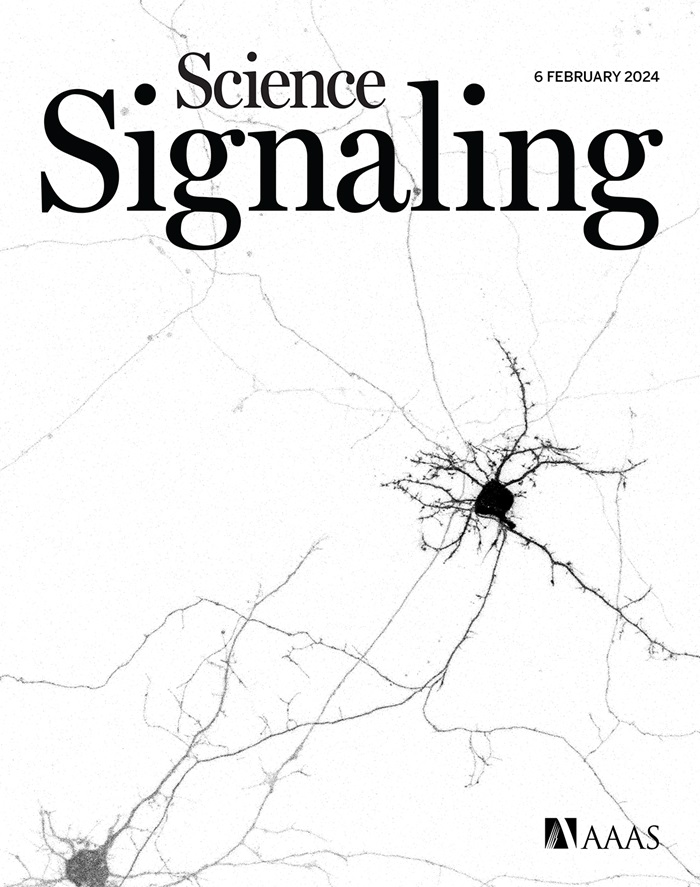清除记忆
IF 7.3
1区 生物学
引用次数: 0
摘要
联想恐惧习得后,杏仁核外侧突触AMPA受体亚基组成发生改变。即使实验对象是完全安全的,对恐惧反应的抑制也会出乎意料地逆转。这可能会导致对与恐惧相关的触发因素做出不适当的反应,比如明亮的光线或大声的噪音。这种类型的反应似乎是创伤后应激障碍的基础,但人们对抑制恐惧的训练何时会失败或成功知之甚少。Clem和Huganir在老鼠身上结合了电生理学和行为训练,观察到恐惧条件反射增加了通过钙渗透性AMPA受体到控制情绪反应的大脑部分(杏仁核)的突触传递。这种效果持续了大约一个星期,在此期间,如果训练动物减少条件性恐惧反应,可怕的记忆就会被抹去。死后的大脑切片显示,除了AMPA受体亚基突变的转基因小鼠外,恐惧引起的突触变化也会逆转。李建军,张建军,张建军。钙渗透性AMPA受体动态调节恐惧记忆的消除。科学33,1108-1112(2010)。【摘要】【全文】本文章由计算机程序翻译,如有差异,请以英文原文为准。
Wiping Out Memories
The subunit composition of AMPA receptors at lateral amygdala synapses changes after the acquisition of associative fear. Inhibition of fear responses can be unexpectedly reversed even when a subject is perfectly safe. This can lead to inappropriate reactions to a fear-associated trigger, such as a bright light or loud noise. This type of reaction appears to underpin posttraumatic stress disorder, but there is little understanding of when training to inhibit fear may fail or succeed. Using a combination of electrophysiology and behavioral training in mice, Clem and Huganir observed that fear conditioning increased synaptic transmission by calcium-permeable AMPA receptors into the part of the brain that controls emotional responses (the amygdala). This effect lasted for about a week, during which the fearful memories could be erased if the animals were trained to reduce conditioned fear responses. Postmortem brain slices showed that the fear-induced synaptic changes also reversed, except in transgenic mice with a mutant subunit of the AMPA receptor. R. L. Clem, R. L. Huganir, Calcium-permeable AMPA receptor dynamics mediate fear memory erasure. Science 330, 1108–1112 (2010). [Abstract] [Full Text]
求助全文
通过发布文献求助,成功后即可免费获取论文全文。
去求助
来源期刊

Science Signaling
Biochemistry, Genetics and Molecular Biology-Molecular Biology
自引率
0.00%
发文量
148
期刊介绍:
Science Signaling is a weekly, online multidisciplinary journal dedicated to the life sciences. Our editorial team's mission is to publish studies that elucidate the fundamental mechanisms underlying biological processes across various organisms. We prioritize research that offers novel insights into physiology, elucidates aberrant mechanisms leading to disease, identifies potential therapeutic targets and strategies, and characterizes the effects of drugs both in vitro and in vivo.
 求助内容:
求助内容: 应助结果提醒方式:
应助结果提醒方式:


